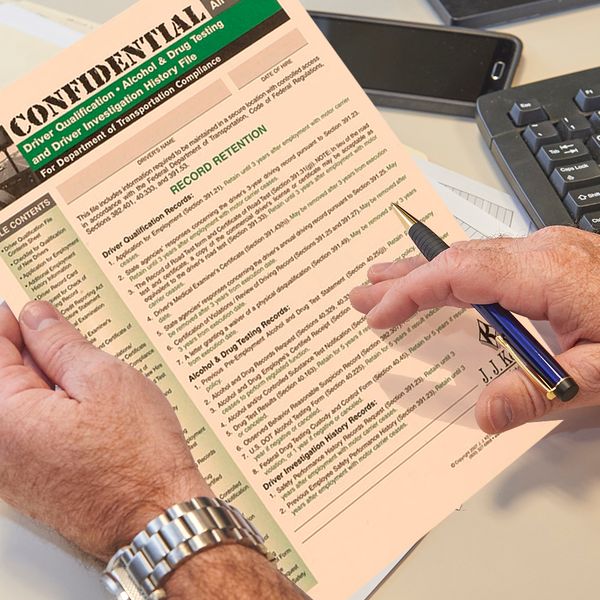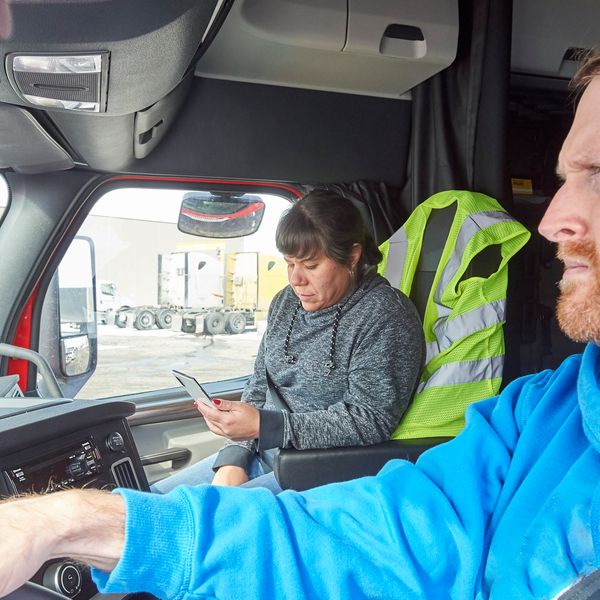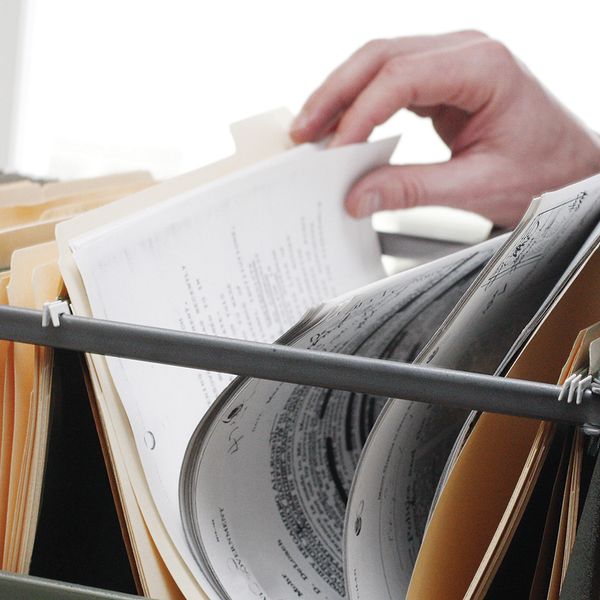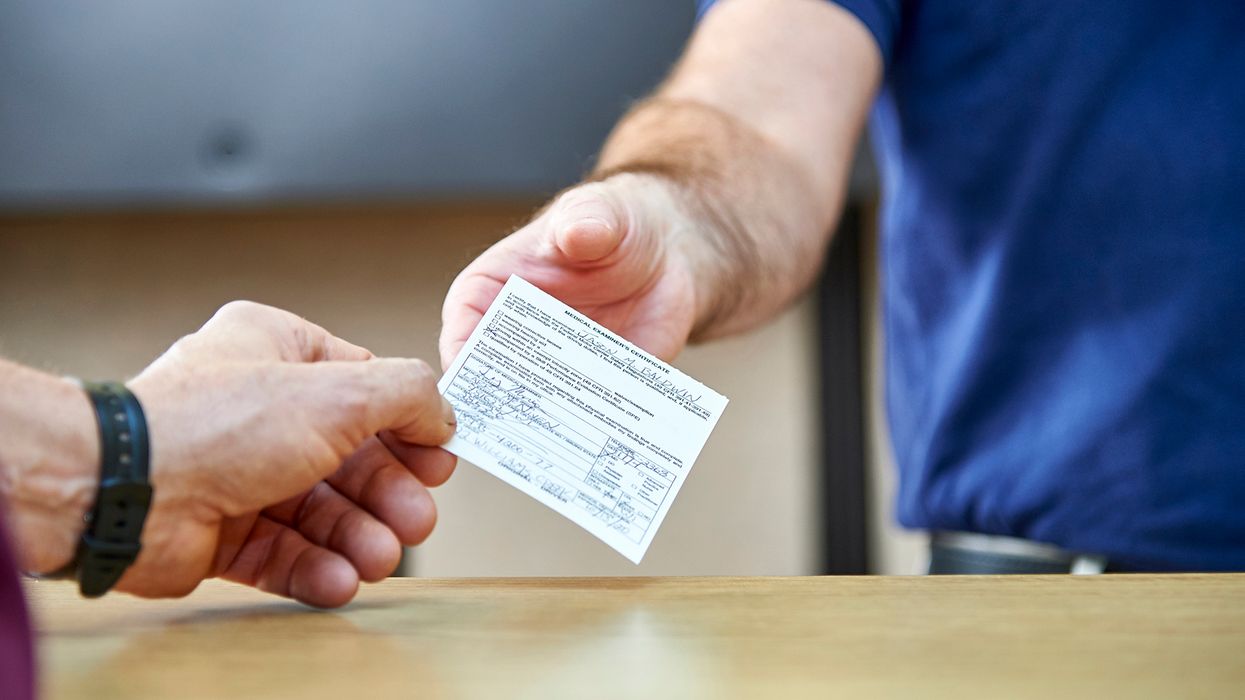CMV driver qualification and hiring, step by step
With DOT regulation changes in recent years, the process of hiring and qualifying a commercial motor vehicle (CMV) driver has become more complex. More rules mean more paperwork, and keeping it all straight can be difficult at best.
Do you know which records you need to create — and which steps you need to take — to hire a qualified truck or bus driver?
Timeline
The following is a basic timeline for complying with rules from the Federal Motor Carrier Safety Administration (FMCSA). It also includes certain best practices for hiring new drivers and getting them qualified to be on the road. Though it’s 27 steps long, don’t panic — some items apply only to drivers who hold a commercial driver’s license (CDL), and some are optional.
The order in which many of these steps are performed can be customized to your needs. Be sure to consult with an attorney or HR expert for guidance on complying with all labor and employment laws.
- Get driver application. From each driver-applicant, obtain a completed driver-specific employment application that complies with 49 CFR 391.21. Ensure your application includes information about the driver’s rebuttal rights concerning their safety performance history (obtained in step #13 below). Review the application for any missing information, disqualifiers, gaps in employment, having several employers in a short time, history of violations, or other red flags.
- Ensure basic qualifications. Ensure the candidate meets basic DOT, company, and insurance company qualifications to be a driver (391.11), including but not limited to:
- Being at least 21 years old to engage in interstate commerce, or old enough to be a driver within your state.
- Holding only one currently valid driver’s license of the proper type and with any needed endorsements — and no restrictions — for the vehicle(s) and cargo you intend to assign.
- Get MVRs. Obtain motor vehicle record(s) (MVRs) from the state driver licensing agency(ies) (or other licensing authority(ies)) where the driver-applicant was licensed during the past three years. If required by the state/authority, obtain the driver’s written authorization for you to obtain their MVR. If using a third party to obtain the MVR, have the driver sign the required Fair Credit Reporting Act (FCRA) disclosure statements. Note that the MVR(s) must be obtained within 30 days after hire (unless needed to verify medical certification), but earlier is better. (391.23)
- Perform background check (optional). Perform any other company-required background checks, in compliance with state laws and the FCRA.
- Run PSP report (optional). Obtain the driver-applicant’s pre-employment screening program (PSP) report, after obtaining the driver’s written consent using the approved PSP consent form. This report will reveal the driver’s roadside inspection and accident history. Be sure to keep the consent form in the driver’s file.
- Meet hiring standards. Compare the driver’s record to the company’s hiring standards, which must meet or exceed FMCSA minimums in 391.11, to ensure the driver is eligible for hiring as a driver based on driving experience, driving record, crash history, employment history, etc. Be consistent in applying the standards.
- Conduct an interview. Conduct a driver interview (this step may occur earlier, if desired). Make sure your interview questions comply with the Equal Employment Opportunity Commission (EEOC) guidelines. During the interview, make sure the candidate can read and speak English well enough to converse with the general public, follow traffic signs/signals, respond to official inquiries, and make entries on reports and records.
- Extend an offer. Extend a conditional offer of employment. Note that inquiries or tests concerning the applicant’s medical and drug/alcohol testing history/status may only occur after this conditional offer of employment has been extended.
- Schedule tests and classes. Schedule the applicant for a DOT pre-employment drug test (if a CDL driver), DOT medical exam (if you will not be accepting the driver’s current Medical Examiner’s Certificate), and a driver orientation class.
- Complete the I-9. Have the driver complete an I-9, Employment Eligibility Verification form. Verify acceptable identification documents from the applicant and certify the form. Section 1 must be completed by the end of the driver’s first day of paid work. You must complete Section 2 within three business days of the date employment begins.
- Complete the contract. Have the driver sign your employment contract, as applicable.
- Get authorization for testing history. Get written authorization from the driver to obtain the driver’s drug & alcohol testing history from previous employer(s), if the driver was subject to DOT testing under an agency other than the FMCSA. (391.23)
- Obtain safety performance history. Submit a request to the driver-applicant’s previous and current employers (going back three years, but only to employers for whom the applicant drove a CMV). This request is made to verify employment and obtain the driver’s DOT-recordable accident history. Also request the driver’s DOT-regulated drug/alcohol testing history from any non-FMCSA-regulated employers, if applicable. Document your actions, and if there is no reply after at least two attempts, maintain a record of your “good-faith effort” to obtain the information. You must obtain the information or document your effort within 30 days after hire, but earlier is better. Note that the drug/alcohol history may be requested only after you have made a conditional offer of employment to the driver.
- Get medical card or MVR. Obtain a copy of the driver’s current Medical Examiner’s Certificate. If the driver holds a CDL or CLP, you may only use a paper medical certificate for up to 15 days after the driver’s last medical exam as proof the driver is certified. After that, you must have an MVR showing that the driver is medically certified.
- Verify NRCME listing. Verify and document that the driver’s medical examiner was listed on the National Registry of Certified Medical Examiners at the time of the last exam, even if you accept the driver’s pre-existing medical certificate in place of a new exam.
- Obtain proof of variance. Obtain documentation of any medical variance the driver may have, if applicable.
- Road test. Do one of the following:
- Perform a road test and complete the required form and certificate, OR
- Get a copy of the driver’s existing road-test certificate if less than three years old, OR
- Get a photocopy of the driver’s CDL (unless the driver will operate a double/triple trailer or tank vehicle, or is using the alternative vision standard (391.44) for the first time, in which case a road test in that type of vehicle is required). (391.31-391.33)
- Verify self-certification. Obtain documentation showing the type of driving the driver self-certified that they will perform. This self-certification is made to the state licensing agency by the driver, and should be available on the driving record. Verify that the driver is properly self-certified for the type of driving that will be performed for you (such as “non-excepted interstate” as one of four options). (383.71(g))
- Query the Clearinghouse. Log in to the Drug & Alcohol Clearinghouse and request a full pre-employment query. The query results cannot be retrieved until the driver then logs in to the Clearinghouse to grant consent. Verify that the driver is not in a “prohibited” status. Note: The query may be obtained before or after conducting a road test, but must be before the driver operates a CMV in commerce.
- Get consent for future queries. Have the driver sign a consent form that will allow you to perform annual “limited” Clearinghouse queries, unless you intend to run “full” queries each year. The driver may decide how long such consent will last, but it may be for the length of employment.
- Issue drug/alcohol materials. Issue the required drug/alcohol educational materials and your company drug/alcohol policy to the driver and maintain a signed certificate of receipt. (382.601)
- Perform drug test. Send the driver for a DOT pre-employment drug test, as scheduled in step #9 above (unless using the exception in 382.301(b)). Obtain the test results before there is any CMV driving. (382.301)
- Perform required training. As applicable:
- Ensure the driver has a longer-combination-vehicle (LCV) training certificate, or ensure the driver receives LCV training, before operating a longer combination vehicle (Part 380, Subpart A).
- Conduct hazardous-materials training if the driver will be dealing with hazardous materials.
- Add driver to testing program. Enroll the driver in your random drug and alcohol testing program. This must be done within no more than 30 days of the pre-employment test completed under step #22.
——— FOR ALL DRIVERS (continued) ——— - Complete orientation. Ensure the driver passes your new-driver orientation process.
- Verify HOS compliance. Before the driver operates a CMV for you, obtain either:
- A signed statement showing the driver’s total on-duty time for the past 7 days and the time at which the driver was last relieved from duty (to verify compliance with hours-of-service rules prior to driving for you), OR
- The driver’s logs for the prior 7 days. (395.8(j)(2))
- Complete/verify all documentation. Verify that all required documentation has been compiled for the Driver’s Qualification file (391.51), Driver Investigation History file (391.53), and Drug/Alcohol Testing file (382.401), as applicable. The file(s) may be kept electronically or on paper.
Key to remember: Follow these steps to properly hire and qualify a commercial motor vehicle driver.
NOTE: The timeline above is designed to provide reasonably accurate and authoritative information in regard to the subject matter covered. It is made available with the understanding that J. J. Keller is not engaged in rendering legal, accounting, or other professional service. If legal advice or other expert service is required, the services of such a professional should be sought. J. J. Keller shall not be held liable in any degree for any loss, damage, or injury caused by any omission, error, misprinting, or ambiguity present in this material.



















































